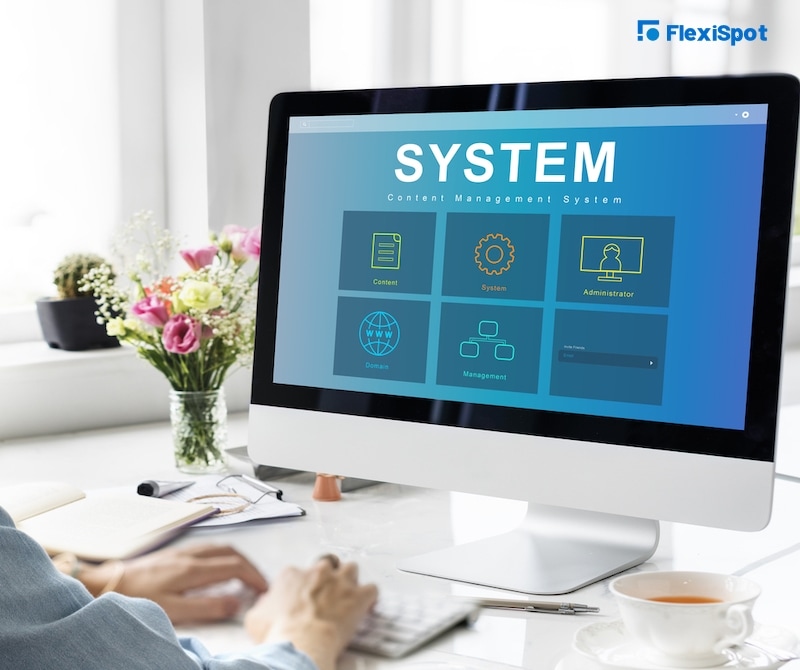“In teamwork, silence isn’t golden; it’s deadly.”- Mark Sanborn
Communication is the backbone of every organization. It affects the flow of work and enhances the success of every task.
But since Covid 19, the structure of workplaces has undergone a revamp. Remote working is the result of the revampings that occurred during the pandemic. Even as the world is recovering and getting things back to normal, most companies have retained virtual and hybrid workplaces.
It’s becoming clear that maintaining communication in a remote setting is a different ball game. Simulating the in-person experience while communicating requires different skillsets. Video calls don’t cut it anymore.
How can you achieve successful virtual communication for teams at work?
It may seem impossible in the virtual arrangement, but it’s possible. You’ll need the right resources and means to avoid a severed communication flow at work.
After an insightful discussion with professionals, we’ve rounded up tips to help the remote workforce communicate effectively.
But first, let’s discuss the pros and cons of communicating remotely at work.
Pros and Cons of Virtual Communication
Pros
It allows for better representation from people who feel intimidated by large groups at physical meetings. They tend to speak up during any remote meeting.
Workers learn to communicate and express themselves in different ways.
Con
It’s impossible to read body language. Therefore, supervisors or managers are at a disadvantage.
Virtual Communication: The How
Have Direct Access to Everything
Direct access to all necessary information or documents simplifies workflow. When a boss demands something, it’s essential to have the means to achieve the task. No one loves to receive long emails requesting access or clarification. To avoid such disturbing messages and aid smooth communication, train your employees to access all vital documents. The training should also cover how to perform primary and secondary assignments.
Recognize working hours
Setting convenient working hours is one of the advantages of remote and hybrid workplaces. It’s not easy to handle time pressure with a hybrid workforce. While most workers prefer the usual business hours, others work early or late at night and everything in between.
Although employers would love to run an accountable system where all workers clock in at a specific time, it might fail in a remote work setting.
So, unless the team has a tight deadline that says otherwise, understand that your working hours won’t be convenient for everyone. Some of your employees will work shifts that are different from yours.
You have the responsibility to manage the time differences regardless.
Designate Remote Channels
With several channels for communication virtually, it becomes difficult to control the work messages. Or you may miss important messages if they mix up with your messages. To avoid such confusion, designate a specific channel for urgent messages and another for not-so-urgent work messages. It would help you avoid clutter and misunderstandings with your team members in the future. Ensure you communicate such designations appropriately.
Study Time Zones
Confusion based on time zones is frustrating. Imagine setting a deadline for an assignment at a specific time only for you to realize you didn’t factor in time zones. Don’t fall victim to such misunderstandings. So, consider time zones and convert them when necessary.
Shorten Communication Task
Taking time to handwrite emails continuously daily is stressful. And having to answer the same question repeatedly breeds work burnout. These could cause rushed or incomplete communication. So, to avoid such, create email templates to ease your work stress. You can also create a FAQ section on your website for questions you have answered repeatedly. To prevent miscommunication and lessen the workload.
Measure Result
Non-communicative employees may come off as lazy or unbothered about communication. But if they turn in impressive work quality, who cares about communicating? Measure their result and how much effort they put into work. Measuring results helps you determine whether they measure up to standard or not.
Define your Intent
While people can infer things from the tone of your email, always make your intention clear. State your needs at the forefront of an official email. If you want something, state it clearly. Don’t assume the tone of your email will send the message. It could result in misunderstanding or strive in the workplace eventually.
Engage in Virtual Office Chats
Random virtual chats create foster closer workplace relationships. It also enhances communication. So, schedule virtual calls where people can express themselves freely. Learn to encourage your team to communicate with everyone without any reservations. You may not have a round table talk physically, but your remote meetings can fill the vacuum.
Keep Things Specific
Specificity is a recipe for effective communications. Ensure you are specific while sending mails. Include date, time, and every necessary detail in your messages. Learn to send follow-up emails when required to clear any misunderstandings or doubts. Keeping things specific helps remote communication by eradicating flimsy work mistakes.
Pick the Proper Tools
Online communication management tool is the trick to enhancing successful remote communication. The best tools create an in-person experience that resolves most of the disadvantages of virtual communication. But with the overwhelming number of management tools out there, making a choice is a catch 24. The best way to decide on the most favorable tool is by analyzing your needs. After analyzing your needs, find one that works for you.
Remember they Are Human
All your employees are human. Set a reminder if you must, but don’t ever forget this fact. Hence, respect the blurring line between their personal life and work life. It’s easy to relate with your workers when they are in the office. But when your employees are outside the office, don try to eat into their personal time.
Set Expectations for Meetings
Meetings can either be a sheer waste of time or impactful and helpful. It’s all a matter of how you manage the meeting before it commences. The effective way to achieve the latter is by communicating well and setting expectations before the meeting. And prevent people from veering off track before the meeting. Also, we advise that you have functional remote communication before the meeting.
Try to Meet in Person
Although this doesn’t work for all businesses, it aids effective communication. It could be the best opportunity for reconnection! Don’t hesitate to ask clients to meet personally as well. It helps businesses in ways you don’t expect.
Keep Knowledge Nearby
If your company has defined regulations guiding business operation, ensure you make them accessible to remote workers. Creating a comprehensive document and sharing it with your employees might help.
Have Fun
Sometimes, work conversations drag on endlessly. We understand that work comes first, but your employees are humans. So, it could get boring or repetitive after a while. Break such long streaks of conversation with random talks. Build a personal relationship with your employees such that they can freely communicate with you. Ask how they are doing! Have fun even while working because it improves work productivity and communication.
Get Helpers
When the burden of communication becomes unbearable, the quality of communication is bound to drop. To prevent this, seek helpers that can take the mantle and maintain the quality. Ask for help when necessary. Asking for help doesn’t make you weak. So, don’t jeopardize communication due to your ego.
Give Good Feedbacks
Online feedbacks are great for businesses, but they are somewhat scary. You may struggle to convey your message in a perfect tone. However, while working remotely, send feedbacks and communicate your points clearly. To limit misunderstanding and contribute to a company’s growth.
Be Patient
Every successful virtual workforce communicates excessively. Communication hardly ends daily because that’s the pillar of every virtual workplace. However, while communicating remotely, be patient, especially while sending emails. If you find the endless communication streak overwhelming, take a break. Struggling to keep up with work even when you are exhausted may lead to burnout. Even your work productivity might drop.
Batch Replies Together
Send out batch replies when you can to save time. Instead of writing the same messages for different people, send one to all three. To avoid misunderstanding, ensure the same email attends to all the recipients.
Keep Improving
Remote communication keeps evolving. Although you may struggle with communication skills now, keep striving to get better. Discover the essential communication skillset to better your communication at work. With the tech world booming and expanding, you’d always find a new tech tool to help you better connect with your team remotely. Don’t be too comfortable or rigid; take all suggestions and explore more effective systems.
Get Together Outside Work Hours
Managing a remote team is challenging if you stick to only virtual meetings and neglect in-person meetings. Build a professional relationship with team members by creating in-person moments. Get the team to go out on dinner or lunch outside work hours. Professional collaborations are essential for team building! Take advantage of every little opportunity or create more opportunities.
Conclusion
Communication is the heart of every company. Without it, a company may fall apart because misunderstanding will occur. However, virtual communication is daunting. Our tips will help create the best strategy to make your remote or hybrid workforce stronger. Additionally, the best workstation like Ergonomic office chairs and standing desks improve work productivity like communication. So, ensure your workers have a healthy workstation!







